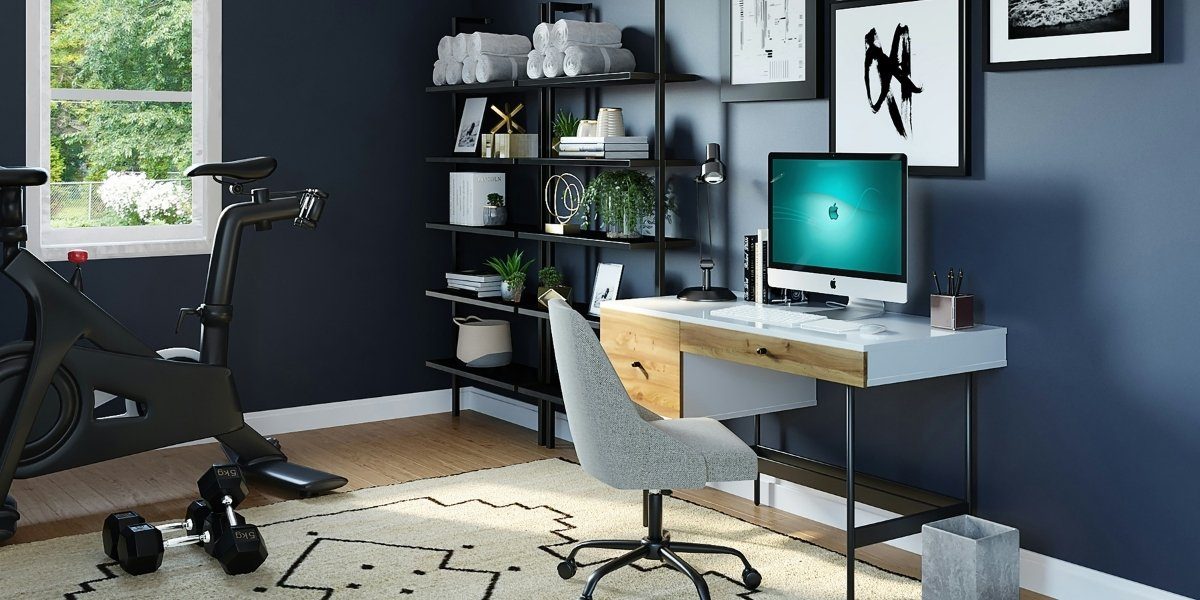As remote work becomes increasingly common, the home office has evolved from a temporary setup into a key space for productivity, creativity, and professional identity. A well-designed home office not only fosters focus and efficiency but also reflects personal style and enhances well-being. This explores the key elements of designing a home office that supports both your work and your lifestyle, providing practical strategies to create a workspace where you can thrive.
Read Also: Cultural Immersion: Transform Your Travel Experience
Optimizing for Productivity
A well-optimized home office should support your productivity by minimizing discomfort and distractions. Applying ergonomic principles is the first step toward creating a comfortable and efficient workspace. Here are a few key strategies:
-
Desk Setup: Your desk should be spacious enough to accommodate your necessary equipment without feeling cluttered. Position your computer monitor at eye level to avoid neck strain. Keep your keyboard and mouse within easy reach to prevent strain on your wrists and arms.
-
Chair Selection: Choose a chair that offers good lumbar support and allows for proper posture. Your feet should be flat on the floor with your knees at a 90-degree angle. A comfortable chair can significantly improve focus and reduce fatigue.
-
Monitor Placement: Position your monitor about an arm’s length away from your eyes, ensuring the top of the screen is at or slightly below eye level. This setup helps reduce eye strain and improves posture.
-
Managing Distractions: To minimize distractions, designate specific areas for work and relaxation. Avoid using your workspace for other activities to help maintain focus. Keeping your physical workspace organized and free from clutter can also help maintain mental clarity.
By focusing on ergonomics and minimizing distractions, your home office can become a space that promotes focus and efficiency.
Creating Zones for Functionality
When designing your home office, it’s essential to create distinct zones for different tasks. If space is limited, consider multifunctional furniture or partitions to separate work from personal areas. Key zones to consider include:
-
Primary Work Area: This is your main workspace where all critical tasks take place. Ensure it is well-organized, equipped with all the tools you need for daily tasks, and free from distractions. This zone should encourage deep focus and efficient workflow.
-
Meeting Space: If your job requires frequent video conferences or virtual meetings, carve out a separate space for these activities. Choose a spot with good lighting and a neutral background, and ensure it’s quiet and free from interruptions.
-
Relaxation Corner: If possible, include a designated relaxation space within your office. A comfy chair or small couch can provide a break for moments of relaxation or informal discussions. This separation between work and relaxation helps you maintain a healthy work-life balance.
Dividing your home office into functional zones not only improves workflow but also helps create mental boundaries between work and personal life.
Harnessing the Power of Lighting
Lighting is crucial for both productivity and mood. The right lighting setup can reduce eye strain, enhance energy levels, and create a comfortable working environment. Here’s how to optimize lighting in your home office:
-
Natural Light: Whenever possible, take advantage of natural light. Position your desk near a window to benefit from daylight, which has been shown to improve mood and alertness. Natural light can also reduce eye strain compared to artificial lighting.
-
Task Lighting: For focused tasks, such as reading or writing, incorporate task lighting. A desk lamp with adjustable brightness can help direct light where you need it most. Choose a lamp that reduces glare and provides even illumination.
-
Ambient Lighting: Ambient lighting, such as ceiling lights or soft overhead lighting, creates a relaxing atmosphere. Ensure that ambient lighting is evenly distributed to avoid dark corners and harsh contrasts.
By combining natural, task, and ambient lighting, you can create a well-lit space that boosts both productivity and comfort.
Incorporating Biophilic Design
Biophilic design, which emphasizes a connection to nature, can play a significant role in enhancing well-being in your home office. Studies show that incorporating natural elements into your workspace can reduce stress and increase creativity. Consider the following biophilic elements:
-
Plants: Adding greenery to your home office can improve air quality and create a calming environment. Choose low-maintenance plants, such as succulents or snake plants, which require minimal care.
-
Natural Materials: Use natural materials like wood, stone, and bamboo for furniture and décor. These materials can create a grounding, peaceful environment that connects you with nature.
-
Views of the Outdoors: If possible, position your workspace near a window with a view of outdoor greenery. The presence of natural scenery can help reduce fatigue and increase overall well-being.
Incorporating biophilic elements into your home office enhances your connection to nature, which can promote creativity, reduce stress, and boost overall productivity.
Personalizing Your Aesthetic
Your home office should be a space that reflects your personal style and motivates you to perform at your best. Personalizing the décor allows you to create an environment that feels comfortable and inspiring. Here are a few ways to infuse your style into your office:
-
Color Palettes: Choose colors that resonate with you and enhance your mood. Calming colors like blues and greens can create a peaceful environment, while vibrant colors like yellows and oranges can increase energy and creativity.
-
Artwork and Accessories: Decorate your space with artwork, motivational quotes, or personal photos that inspire you. These items can create a sense of ownership and belonging in your workspace.
-
Furniture Choices: Select furniture that suits both your functional needs and personal taste. Whether you prefer a sleek, modern desk or a more traditional wooden workspace, your furniture should feel comfortable and help set the tone for the room.
By integrating your personal style into your home office, you can create a space that feels inspiring, motivating, and uniquely yours.
Technology Integration and Organization
A modern home office requires effective management of technology. Streamlining tech setups ensures your workspace is organized, functional, and free from clutter. Key tips include:
-
Cable Management: Tidy cables can reduce distractions and maintain an organized look. Use cable organizers or clips to keep cords hidden and prevent them from tangling.
-
Storage Solutions: Invest in efficient storage solutions for devices, documents, and office supplies. Consider filing cabinets, drawer organizers, or wall-mounted shelves to keep everything in its place.
-
Seamless Tech Setup: Ensure your tech setup is streamlined for maximum productivity. Use wireless devices where possible to reduce clutter and improve mobility.
With proper organization, your technology can work for you, not against you, allowing for a more focused and efficient workspace.
Investing in Comfort and Well-being
A home office should prioritize comfort to sustain productivity and avoid burnout. Consider these factors when designing your space:
-
Supportive Seating: Invest in a comfortable chair that promotes good posture and provides ample support for long hours of sitting.
-
Temperature Control: Ensure your office is kept at a comfortable temperature. A thermostat or fan can help maintain a pleasant working environment.
-
Noise Management: Use noise-canceling headphones or soundproofing options to reduce distractions, especially if you share your living space.
A focus on comfort not only prevents physical strain but also contributes to your overall well-being, ensuring that you remain productive and healthy in your home office.
Read Also: How Running Inspires Competition and Wellness Globally
Designing a high-performance and aesthetically pleasing home office is key to thriving in a remote work environment. By optimizing for productivity, creating distinct work zones, harnessing the power of lighting, incorporating biophilic design, and personalizing your space, you can create an environment that fosters focus, creativity, and well-being. Additionally, integrating technology efficiently and prioritizing comfort will further enhance your workspace. By taking the time to craft a functional and inspiring office, you’re setting yourself up for success both professionally and personally.








